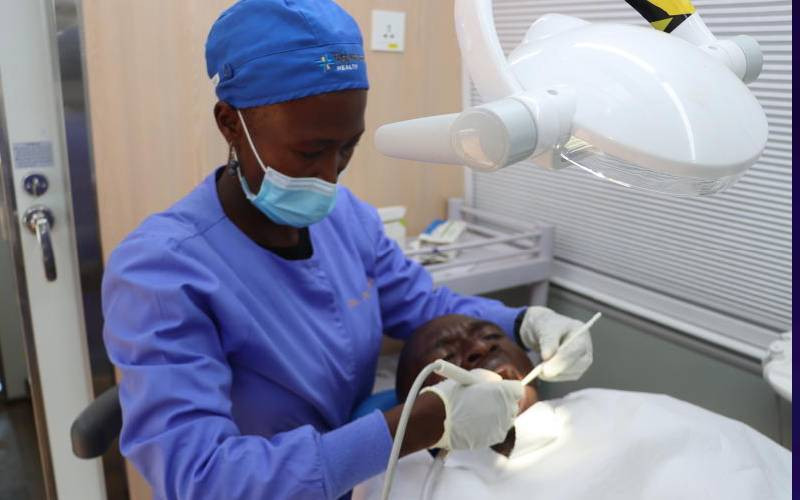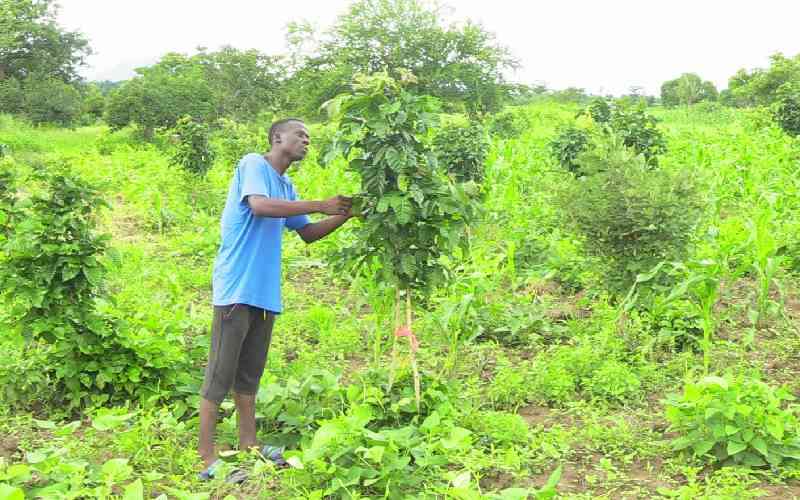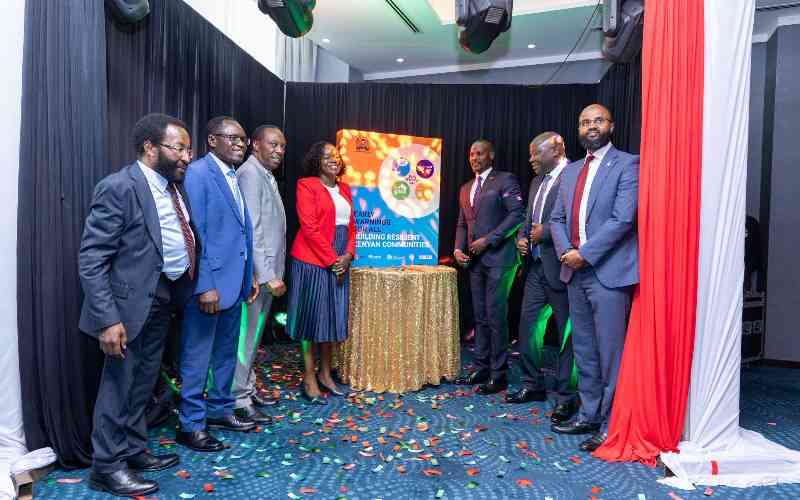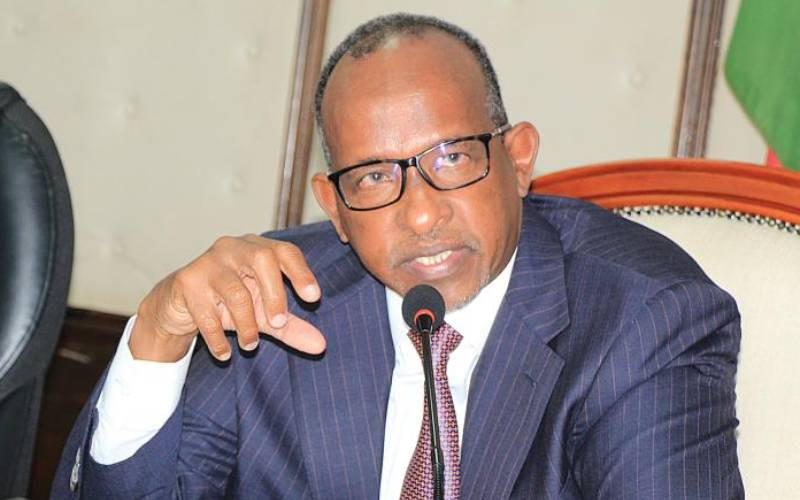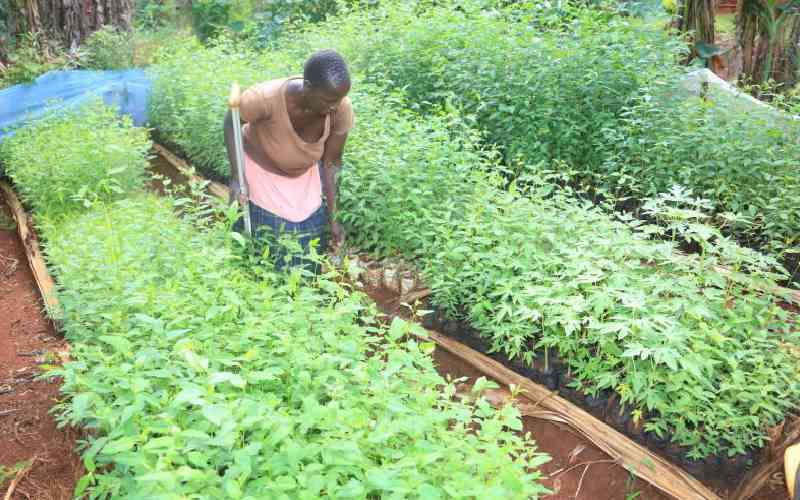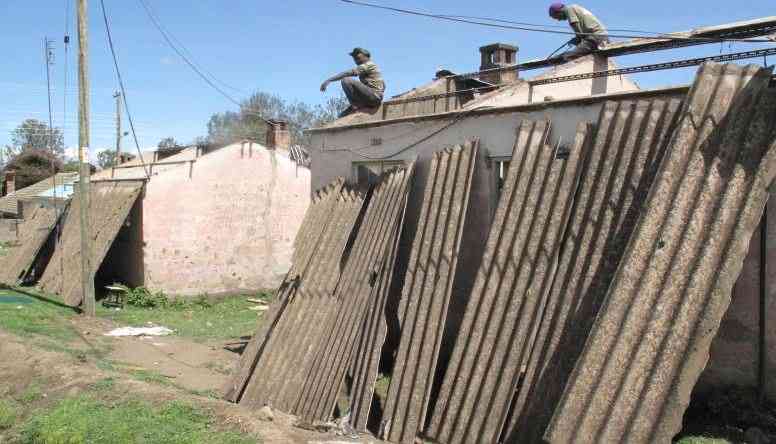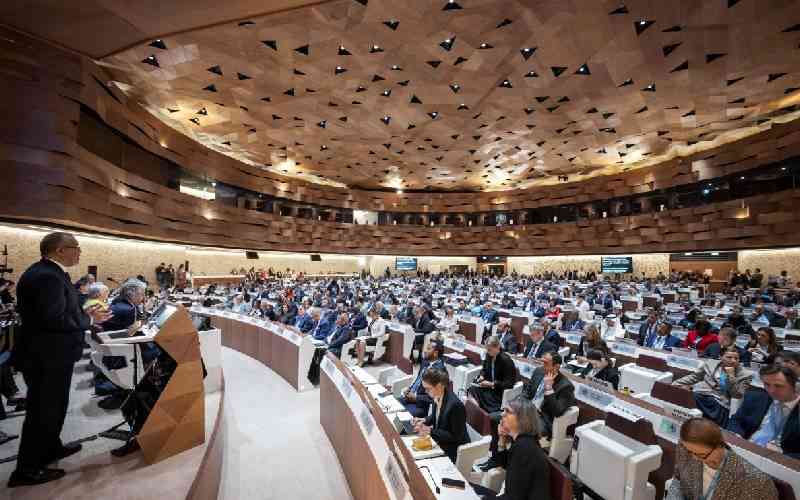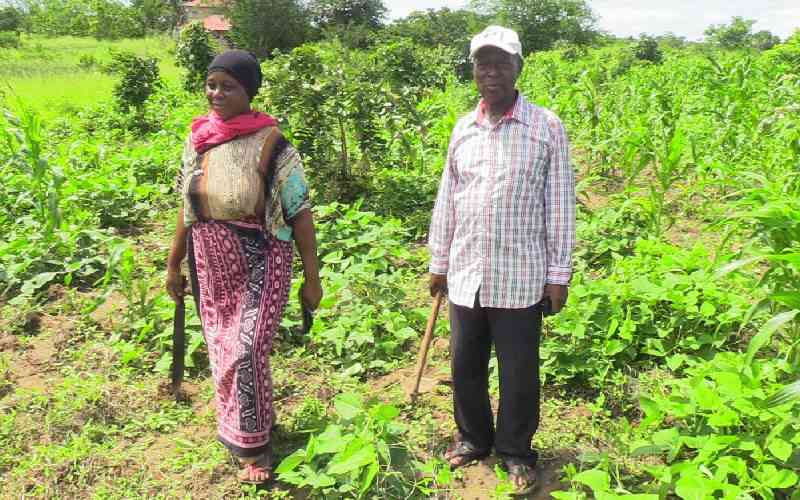
A section of farmers in Kinango, Lunga Lunga and Shimba sub counties, Kwale County, have embarked on the restoration of degraded land with eye on carbon credit funds.
Through the Restore Africa programme that is implemented by stakeholders including the Kwale county government and World Vision, more than 20,000 families have already been enrolled, with a target of 50,000 families and restoration of 70,000 acres of land in five years.
So far, 250,000 tree seedlings distributed by World Vison Kenya, have been planted with the programme targeting only private farmers who are encouraged to plant trees on their farms alongside other crops.
At Patanani village in Mwareni ward, Lunga Lunga Sub County, farmers are taking advantage of the ongoing rains to plant trees and prune tree stumps left to dry by charcoal burners to green the village.
Said Ndaro, 70, and his wife Fatuma Ndaro, 48, narrated how charcoal burning depleted the once forested landscape, leaving behind drying tree stumps of indigenous trees that used to attract rain.
“When I was a child, this area used to be fertile and with reliable rainfall, but all that was disrupted by uncontrolled logging and charcoal burning that left the land bare and exposed to erosion,” said Mr Ndaro.
He said he had initially rejected tree planting on his five-acre piece of land until his wife, who was recruited in the programme, convinced him to accept the noble idea.
“I was not buying the idea because we had tried before to plant trees but they dried up due to lack of water. World Vision came and gave us the way forward and now I am happy,” he said.
Fatuma said he told her husband to accept that the negative effects of climate change had caught up with them, and it was time to adopt restorative strategies to survive.
“I embraced this programme especially when I was taken through training and sensitisation and I started by pruning the stumps in what the organisers called ‘visiki hai’ and watering, and they started sprouting again. It was a wonderful experience to see indigenous trees growing again and my husband was elated,” she said.
Fatuma revealed that under the Restore Africa programme, she was taught about Farmer-Managed Natural Regeneration (FMNR), a technique that revives trees naturally without replanting them and this enabled her to reverse environmental degradation with more than 100 tree stumps on her farm coming to life in an agroforestry system of farming.
“I was given 48 tree seedlings of different species, including mango and cyprus and we revived more than 100 tree stumps of indigenous trees that are now doing well. According to the sensitisation programme, we were taught they are the best in sequestration of carbon from the air. We are now waiting for the right time so that we can also taste the carbon credit money when we sell the carbon,” she said.
Among the indigenous tree species, she has revived on her farm are Mikone, Mipalanda, and Mwarobaini.
“Initially, I thought the tree stumps were some drying waste on my farm and I had started uprooting them to clear land for cultivation, and it was during the same period that the Restore Africa programme came and I stopped,” she added.
Maurice Bati expects to reap big from the carbon credit market in 2029.
“Farmers in this village are working hard to restore the ecosystem after the boost from the programme and they are eagerly waiting for that time when the carbon credit markets will reach us,” he said.
Dismus Nyaga, who is the Restore Africa Manager in Kwale County said that they were encouraging more farmers to join the programme for sustainable livelihoods since it does not interfere with their normal farming activities.
“In Kwale we are targeting 50,000 families and 70,000 acres of land and this time, everyone is talking about climate change hence this restoration programme is going to be a game changer. The developers will come and weigh every five years and they will be benefitting every five years for the next 30 years and the more they plant, the more they will earn,” he said.
His sentiments were echoed by Vivian Kiprotich, the technical specialist for natural resource management at Restore Africa who emphasized that planting trees was the most effective way to restore degraded lands and combat climate change.
“Our goal is to reclaim infertile lands and make them productive and beneficial for our communities. By planting trees and preserving their bases even after they are cut, we enable regrowth and long-term sustainability,” she said.
The Restore Africa initiative, spearheaded by the Global Evergreening Alliance, operates in Kenya, Uganda, and Malawi and in Kenya, World Vision leads a consortium of partners, including JUSTDIGGIT, Self Help Africa, Green Belt Movement, Icraf, and Africa Harvest, focusing on tree growing to restore degraded land and support climate-smart agriculture in Kwale, Kilifi, Narok, Migori, and Elgeyo Marakwet counties.
The final phase of the tree-planting is set to take place during the long rains of 2026, marking a crucial milestone in Kwale’s quest to restore degraded land and improve local livelihoods.
 The Standard Group Plc is a multi-media organization with investments in media platforms spanning newspaper print
operations, television, radio broadcasting, digital and online services. The Standard Group is recognized as a
leading multi-media house in Kenya with a key influence in matters of national and international interest.
The Standard Group Plc is a multi-media organization with investments in media platforms spanning newspaper print
operations, television, radio broadcasting, digital and online services. The Standard Group is recognized as a
leading multi-media house in Kenya with a key influence in matters of national and international interest.

